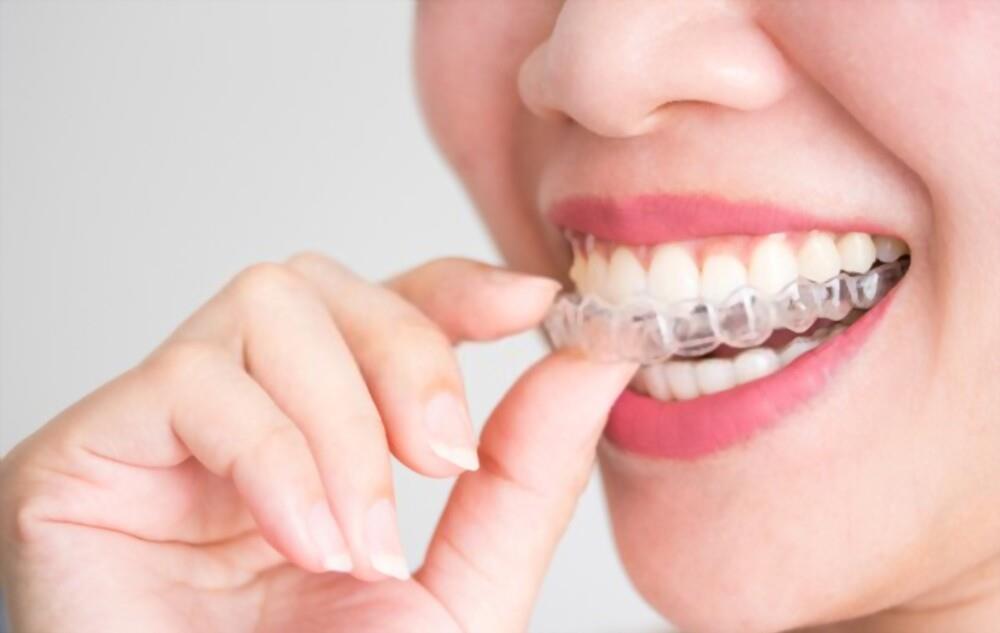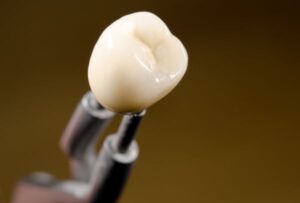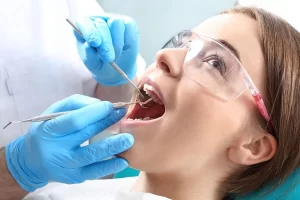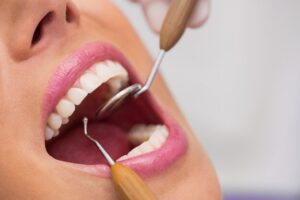In the realm of orthodontics, Invisalign is a revolutionary technology that is transforming the way we think about teeth straightening. This innovative system utilizes a series of custom-made, clear aligners that gradually shift your teeth into their correct positions. Unlike traditional braces, Invisalign aligners are virtually invisible and can be easily removed for eating, brushing, and flossing.

The Invisalign treatment is an intricate process that is carefully planned and executed. The Invisalign method utilizes advanced imaging technology to create a precise 3D model of your teeth. This model is then used to design your unique aligners and to map out the specific movements your teeth will undergo during the treatment.
It’s easy to see why Invisalign is becoming a popular choice for teeth straightening. Not only does it offer a more comfortable and aesthetically pleasing alternative to metal braces, but it also provides a level of convenience that is unparalleled in the field of orthodontics. With Invisalign, you have the freedom to eat what you want, maintain your oral hygiene routine, and smile with confidence throughout your treatment.
Stay tuned as we delve deeper into the Invisalign process and explore how this innovative technology works to straighten your teeth.
What is Invisalign? (FAQs)
Invisalign is a breakthrough in orthodontic treatment, offering an alternative to traditional metal braces. Utilizing a series of custom-made, clear aligners, the Invisalign treatment method has become a popular choice for many. So, how does Invisalign work? What’s its process and what makes it unique?
The Invisalign process involves a series of steps that are designed to gradually move your teeth into their correct positions. This is achieved through the use of clear aligners, which are custom-made for each patient using Invisalign’s proprietary technology. The aligners are designed to be worn for about two weeks each before being replaced with the next in the series.
Invisalign is different from traditional braces in several ways. One of the primary benefits of Invisalign is that the aligners are virtually invisible. This makes them a much more discreet option than metal braces. Additionally, Invisalign aligners are removable, allowing you to eat and clean your teeth without any restrictions.
In terms of effectiveness, numerous studies have demonstrated the efficiency of the Invisalign system. The success of Invisalign treatment depends on the patient’s compliance with wearing the aligners as directed. With regular use, patients can expect to see results in as little as a few months.
Invisalign’s unique approach to orthodontic treatment has made it a popular choice for patients of all ages. Whether you’re a teenager looking for a discreet way to straighten your teeth, or an adult who wants to improve your smile without the hassle of traditional braces, Invisalign offers a convenient and effective solution.
The Science Behind Invisalign: How Does Invisalign Work?
Invisalign, a revolution in orthodontics, has transformed the way we perceive teeth straightening. Unlike traditional braces, Invisalign braces are virtually invisible and offer the advantage of being removable. But what sets them apart is the science and technology behind them. This article delves into the Invisalign process, shedding light on the Invisalign treatment procedure and its effectiveness.
The Invisalign method starts with a 3D scan of the patient’s mouth. This scan is then used to create a customized treatment plan, which outlines how the teeth will move during the Invisalign treatment. Each step in the Invisalign treatment involves wearing a set of clear aligners for about two weeks. These aligners are designed based on the treatment plan and are replaced with new ones every two weeks to gradually move the teeth into the desired position.
The Invisalign system utilizes its patented SmartTrack material to apply controlled force to the teeth. The most impressive aspect of the Invisalign technology is that it can control the timing of the force application. This means, at each stage, only certain teeth are moved, as per the Invisalign treatment plan.
The Invisalign alignment process is a result of years of research and development. The Invisalign procedure has been designed to ensure comfort, convenience, and effective results. The working of Invisalign braces is a testament to the advances in dental technology, providing a solution that is not only aesthetically pleasing but also highly efficient.
Invisalign braces procedure offers numerous benefits over traditional braces. Notably, the clear aligners are removable, allowing you to eat, brush, and floss normally. Furthermore, the Invisalign system requires fewer visits to the orthodontist, saving you time and effort.
In conclusion, the Invisalign treatment is a perfect blend of science and technology, providing a convenient and comfortable solution for straightening teeth. Its innovative design and effective results make it a preferred choice for many. The clear aligners process has indeed revolutionized orthodontics, offering an effective and aesthetically pleasing solution to misaligned teeth.
So, how does Invisalign straighten teeth? By leveraging advanced technology and a personalized treatment plan. It’s a process that’s as clear as the aligners themselves.
The Process of Getting Invisalign (FAQs)
When it comes to transforming your smile without the traditional braces, Invisalign is a popular choice. The Invisalign treatment utilizes a series of clear aligners designed to gradually shift your teeth into their correct positions. But what does the Invisalign process entail? Here’s a step-by-step guide based on frequently asked questions about the procedure.
How does the initial consultation work?
How is the Invisalign system customized for me?
How does Invisalign move teeth?
What are the steps in the Invisalign treatment?
How effective is the Invisalign method?
What are the benefits of Invisalign?
This FAQ section has provided a brief overview of the Invisalign process, from initial consultation to the benefits of the treatment. By understanding the workings of Invisalign braces, you can make an informed decision about your orthodontic treatment.
Invisalign Treatment Duration (FAQs)
When it comes to the Invisalign treatment duration, there are a few factors that can influence the timeline. The Invisalign process is not a one-size-fits-all, and the duration can vary greatly depending on the individual’s teeth alignment needs.
One of the main factors that influence the Invisalign treatment duration is the complexity of the case. More complex cases, such as severe crowding or spacing, can take longer to treat with the Invisalign system than less complex cases. This is because the Invisalign aligners work by gradually shifting the teeth into their desired position, and the more complex the case, the more time it may take for the aligners to effectively move the teeth.
Another factor that can influence the duration of the Invisalign procedure is the patient’s compliance with the treatment. For the Invisalign method to be effective, it is recommended that the aligners are worn for 20 to 22 hours a day. If the aligners are not worn as recommended, it can prolong the treatment duration.
The typical duration of an Invisalign treatment can range from 12 to 18 months, but this can vary based on the factors mentioned above. It’s also important to note that every patient’s experience with Invisalign is unique, and results can vary.
In conclusion, the Invisalign treatment duration is influenced by a variety of factors including the complexity of the case and patient compliance. Despite these variables, Invisalign offers a flexible and effective solution for achieving a healthier, more confident smile. If you’re considering Invisalign, speak with an orthodontist to get a better idea of what to expect for your individual case.
Living with Invisalign: Daily Routine and Maintenance (FAQs)
When you start your Invisalign treatment, understanding your daily routine and maintenance is crucial for the success of the process. This section will provide answers to several FAQs related to everyday life with Invisalign, aiming to give you a comprehensive understanding of the Invisalign system and its effectiveness.
How does the Invisalign process work?
What are the benefits of Invisalign?
What is the Invisalign method?
Is the Invisalign procedure effective?
Invisalign and Pain: What to Expect (FAQs)
Many patients considering the Invisalign treatment often ask about the level of discomfort they might experience. We’ve compiled some frequently asked questions (FAQs) to help clarify what you can expect during the Invisalign procedure.
Does the Invisalign process cause pain?
The Invisalign technology is designed to minimize discomfort. However, when you first start wearing a new set of aligners, you might experience a feeling of pressure for a few days. This is a good sign that the aligners are working to move your teeth to their desired positions.
How long does the discomfort last?
Are there ways to alleviate the discomfort?
Will the Invisalign aligners hurt my gums or cheeks?
How does Invisalign straighten teeth without causing severe pain?
Does the Invisalign procedure involve any painful operations?
Is the Invisalign treatment more comfortable than traditional braces?
In conclusion, the Invisalign method is designed to deliver effective results with minimal discomfort. Always consult with your orthodontist if you have any concerns about pain or discomfort during your treatment.
Invisalign vs. Traditional Braces: A Comparison
When it comes to orthodontics, Invisalign and traditional braces have been the main options for teeth alignment. Understanding the Invisalign process and the workings of traditional braces can help you make a more informed decision about your orthodontic treatment.
The Invisalign treatment involves a series of clear, removable aligners that are custom-made to fit your teeth. These aligners gradually move your teeth into the desired position. One of the main benefits of Invisalign is its appearance. Since the aligners are clear, they are far less noticeable than traditional braces. Invisalign aligners are also removable, which makes maintenance easier. You can take them out to eat, drink, brush, and floss. However, for the Invisalign system to be effective, you must wear the aligners for at least 22 hours a day.
On the other hand, traditional braces use metal brackets and wires to move teeth into position. They are not removable, which can make eating certain foods and cleaning your teeth more challenging. However, traditional braces can be more effective at treating severe alignment issues. They also require less self-discipline since they are attached to the teeth and cannot be removed at will.
In terms of comfort, Invisalign aligners are typically more comfortable than metal braces since they do not have sharp edges. However, some people may experience discomfort when changing to a new set of aligners as their teeth adjust to the new position.
When comparing the effectiveness of Invisalign and traditional braces, it’s important to note that the success of any orthodontic treatment largely depends on the individual’s specific dental issues and their adherence to the treatment plan. For minor to moderate alignment issues, Invisalign can be just as effective as traditional braces. However, for more severe alignment issues, traditional braces may be a better option.
In conclusion, both Invisalign and traditional braces have their pros and cons. It’s important to discuss your options with your orthodontist to find the treatment that best fits your lifestyle and dental needs.
“As a practicing dentist, I often encounter patients curious about Invisalign. It’s a revolutionary system that uses a series of custom-made, virtually invisible aligners to gradually shift your teeth into their correct position. These aligners are based on precise impressions of your mouth and treatment planning done by your dentist. It’s an efficient, discreet, and comfortable method of straightening teeth without the need for traditional braces,” says
Dr. Guneet Alag, DDS, FAGD at Fab Dental, Hayward, CA.
Conclusion
Invisalign, a revolutionary orthodontic technology, has transformed the way we perceive teeth alignment treatments. The Invisalign process is founded on a unique blend of comfort and effectiveness, offering a virtually invisible solution for correcting various dental alignment issues.
The Invisalign treatment works through a series of custom-made clear aligners, specifically designed to gradually shift your teeth into their ideal positions. Unlike traditional braces, the Invisalign procedure offers the flexibility to remove the aligners during meals or when brushing your teeth. This unique feature significantly contributes to the overall comfort and convenience of the Invisalign method.
Moreover, the Invisalign system is powered by advanced 3D computer imaging technology. This enables your dentist to map out a precise treatment plan, from the initial position of your teeth to the final desired position. The custom-made aligners are then produced according to this plan. Each aligner is worn for about two weeks before being replaced by the next in the series, gradually moving your teeth week by week, millimeter by millimeter, towards their final positions.
In summary, the benefits of Invisalign go beyond cosmetic appeal. The treatment not only enhances your smile but also improves your oral health by reducing the risk of gum disease and tooth decay. However, the success of the Invisalign treatment largely depends on the patient’s commitment. For optimum results, it is recommended to wear the aligners for 20 to 22 hours a day.
In conclusion, Invisalign offers a modern, effective, and convenient solution for straightening teeth. Whether you are a teenager or an adult, Invisalign aligners could be an excellent option if you are looking to improve your smile without disrupting your lifestyle.
FAQs for ‘How Does Invisalign Work?’
What is Invisalign?
Invisalign is a type of orthodontic treatment that helps to straighten teeth without the use of traditional metal braces. It involves wearing a series of custom-made clear plastic aligners that help shift your teeth into the proper position.







